PRAISE FOR FRANKENSTEINS CAT
Emily Anthes gets the balance just right... There are brilliant stories of the entrepreneurs who want to bring glowing fish and remote controlled cockroaches to market, contrasted with the potentially lifesaving work of pharmed animals modified to produce medicine in their milk. We got GM crops horribly wrong and Anthes shows us the approach we should take to avoid making the same mistakes with modified animals. Always enjoyable, a page turner of a popular science book with a surprise awaiting around every corner.
Brian Clegg, author of Inflight Science and The Universe Inside You
Emily Anthes creatures are far stranger (and, at times, scarier) than Frankensteins monster. She compellingly balances the pluses and minuses of sciences increasing ability to alter the animals we share the planet with. A fascinating read.
Alex Boese, author of Elephants on Acid and Electrified Sheep
Frankensteins Cat is a report from the frontiers of the scientific campaign to re-engineer animals to fulfil human desires. At the same time Anthes, whose love of animals shines through on every page, takes her readers on a rich and challenging quest of self-discovery: what rights do the animal objects of our creativity possess, and what obligations to them and to ourselves must we accept as we reshape (again!) the living world? A great read... Funny and deep.
Thomas Levenson, author of Newton and the Counterfeiter
With wit, high intelligence, and a lively writing style, Emily Anthes portrays the new world of biotechnology in which we control the bodies and brains of other animals and the moral and philosophical issues so raised.
Alan Lightman, author of Einsteins Dreams
Frankensteins Cat is smart, lucid, and full of surprises. There is hardly a page that doesnt contain something new or unexpected.
Anne Fadiman, author of The Spirit Catches You and You Fall Down
Animals are fascinating if reluctant soldiers in the biotech revolution, writes [Emily] Anthes... in this witty and thought-provoking book.
Publishers Weekly
An elegant tour of the wild and fraught sideshow of animal biotechnology... Learned, entertaining, and illuminating.
Kirkus Reviews
Medicine-producing goats, a glowing beagle, and remote-controlled rats seem like science fiction, but not only are they scientifically possible, theyre already here... Anthes not only explores what is being done but also asks why and if it should be done. Along the way, the book reveals much about humans and our connections to animals and the world we all inhabit.
Booklist
FRANKENSTEINS CAT


A Oneworld Book
First published in Great Britain and the Commonwealth by
Oneworld Publications 2013
This eBook edition published in 2013
Originally published in the United States by Scientific American Books,
an imprint of Farrar, Straus and Giroux
Copyright Emily Anthes 2013
The moral right of Emily Anthes to be identified as the Author of this work has been asserted by her in accordance with the Copyright, Designs and Patents Act 1988
All rights reserved
Copyright under Berne Convention
A CIP record for this title is available from the British Library
An excerpt from Frankensteins Cat originally appeared, in slightly different form, in Scientific American.
ISBN 978-1-85168-968-2
eBook ISBN 978-1-78074-216-8
Designed by Abby Kagan
Illustrations by Diego Patino
Cover illustration: Frankie missed lighting-bolt school today,
Diego Patio, www.DiegoPatino.com
Oneworld Publications
10 Bloomsbury Street
London WC1B 3SR
Stay up to date with the latest books, special offers, and exclusive content from Oneworld with our monthly newsletter
Sign up on our website
www.oneworld-publications.com
For my family humans and canines alike
FRANKENSTEINS CAT
Introduction
 In China, the worlds manufacturing power house, a new industry is taking shape: the mass production of mutant mice. Peek into the 45,000 mouse cages at Shanghais Fudan University and youll see a growing collection of misfits. By randomly disabling the rodents genes, the scientists here are churning out hundreds of odd animals, assembly-line style. They have created mice studded with skin tumours and mice that grow tusks. Theres a mouse with male-pattern baldness, hair everywhere save for a lonely bare spot on its head. Some of the mice have strange behavioural quirks they endlessly bury marbles, for instance, or make only left turns. One strain ages at warp speed. Another cant feel pain.
In China, the worlds manufacturing power house, a new industry is taking shape: the mass production of mutant mice. Peek into the 45,000 mouse cages at Shanghais Fudan University and youll see a growing collection of misfits. By randomly disabling the rodents genes, the scientists here are churning out hundreds of odd animals, assembly-line style. They have created mice studded with skin tumours and mice that grow tusks. Theres a mouse with male-pattern baldness, hair everywhere save for a lonely bare spot on its head. Some of the mice have strange behavioural quirks they endlessly bury marbles, for instance, or make only left turns. One strain ages at warp speed. Another cant feel pain.
While some of the rodents have obvious abnormalities, others reveal their secrets over time. One variety appears normal on the outside, with thick white fur and healthy pink ears and noses. But the animals are klutzes. They are clumsy and spectacularly uncoordinated. They fail miserably when researchers put them through their paces at a special rodent boot camp. In one test, the mice are tasked with standing on top of a rotating rod for as long as they can manage, the rodent equivalent of a log-rolling challenge. Its not an easy undertaking, but normal mice eventually find their footing. The mutant mice never do. They also have trouble balancing on a narrow wooden beam and keeping their grip when suspended, upside down, from a wire screen. And they have strange gaits taking abnormally wide steps and holding their tails at odd angles, curved up towards the ceiling, instead of letting them simply drag along the floor behind them, as mice usually do.
Even stranger, perhaps, are the Lonely Hearts Club mice. The males of this strain look like regular rodents, but the females consistently refuse to mate with them. The poor guys, lacking some certain je ne sais quoi, simply have no sex appeal, and they are rejected time and time again.
These mice are just a small sample of the more than 500 different kinds of mutants the Fudan team has created. Ultimately, the researchers hope to create 100,000 strains of modified mice, each eccentric in its own way. It would be enough to fill a carnival sideshow thousands of times over.
As long as were dreaming up animal sideshows, we neednt stop with peculiar mice. Science has given us a whole new toolbox for tinkering with life, and we have the power to modify animals in profound new ways. We are editing their genetic codes, rebuilding their broken bodies, and supplementing their natural senses. Tabloids and broadsheets alike frequently herald the birth of strange new creatures: Bionic beetles! Glowing cats! Spider goats! Roborats! The breakthroughs are simultaneously astounding and puzzling. What are these creatures exactly? What do they look like? Whos creating them, and why? And are these animals really so novel?
Indeed, we have a long history of refashioning animal bodies. Take the varied members of the species

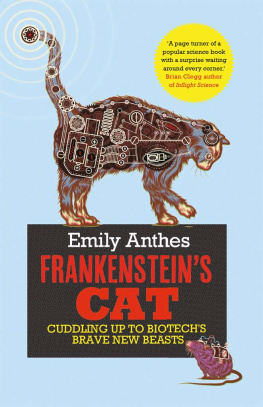

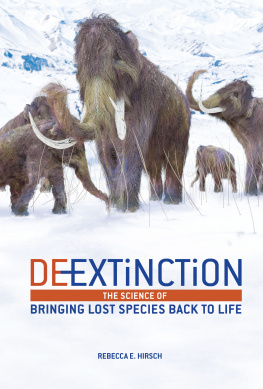
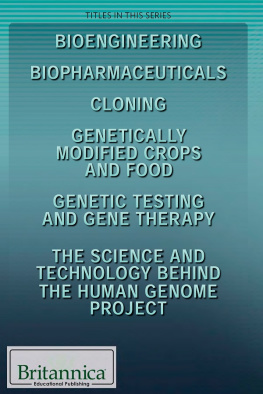
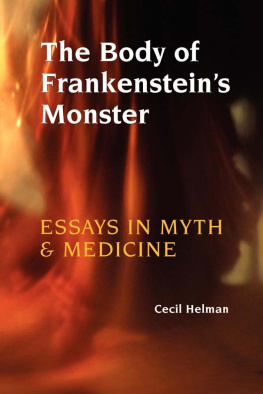

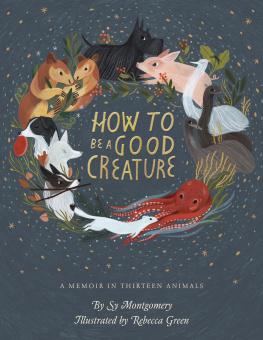
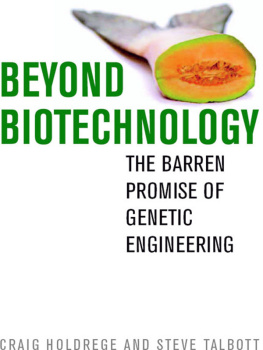


 In China, the worlds manufacturing power house, a new industry is taking shape: the mass production of mutant mice. Peek into the 45,000 mouse cages at Shanghais Fudan University and youll see a growing collection of misfits. By randomly disabling the rodents genes, the scientists here are churning out hundreds of odd animals, assembly-line style. They have created mice studded with skin tumours and mice that grow tusks. Theres a mouse with male-pattern baldness, hair everywhere save for a lonely bare spot on its head. Some of the mice have strange behavioural quirks they endlessly bury marbles, for instance, or make only left turns. One strain ages at warp speed. Another cant feel pain.
In China, the worlds manufacturing power house, a new industry is taking shape: the mass production of mutant mice. Peek into the 45,000 mouse cages at Shanghais Fudan University and youll see a growing collection of misfits. By randomly disabling the rodents genes, the scientists here are churning out hundreds of odd animals, assembly-line style. They have created mice studded with skin tumours and mice that grow tusks. Theres a mouse with male-pattern baldness, hair everywhere save for a lonely bare spot on its head. Some of the mice have strange behavioural quirks they endlessly bury marbles, for instance, or make only left turns. One strain ages at warp speed. Another cant feel pain.